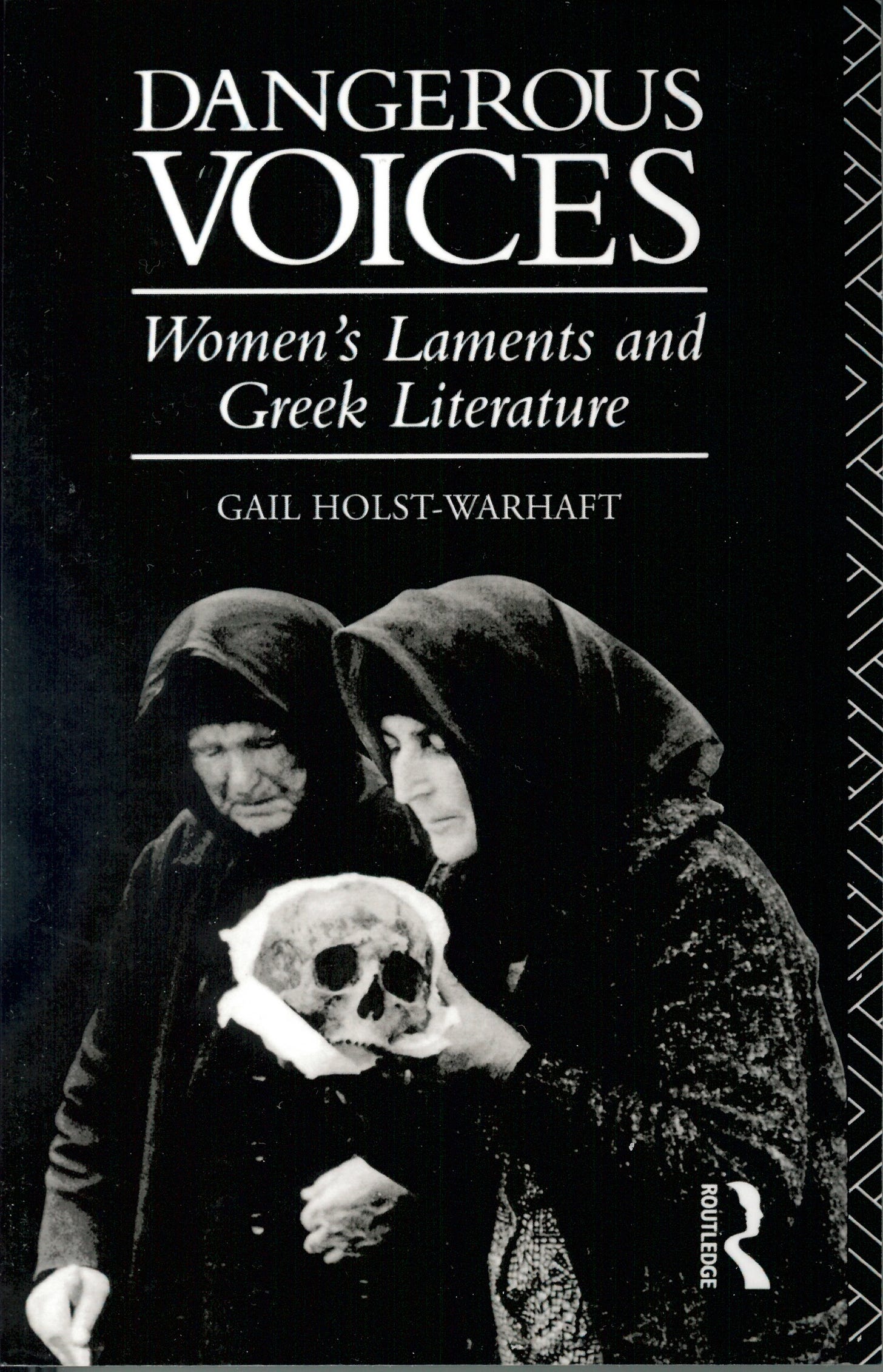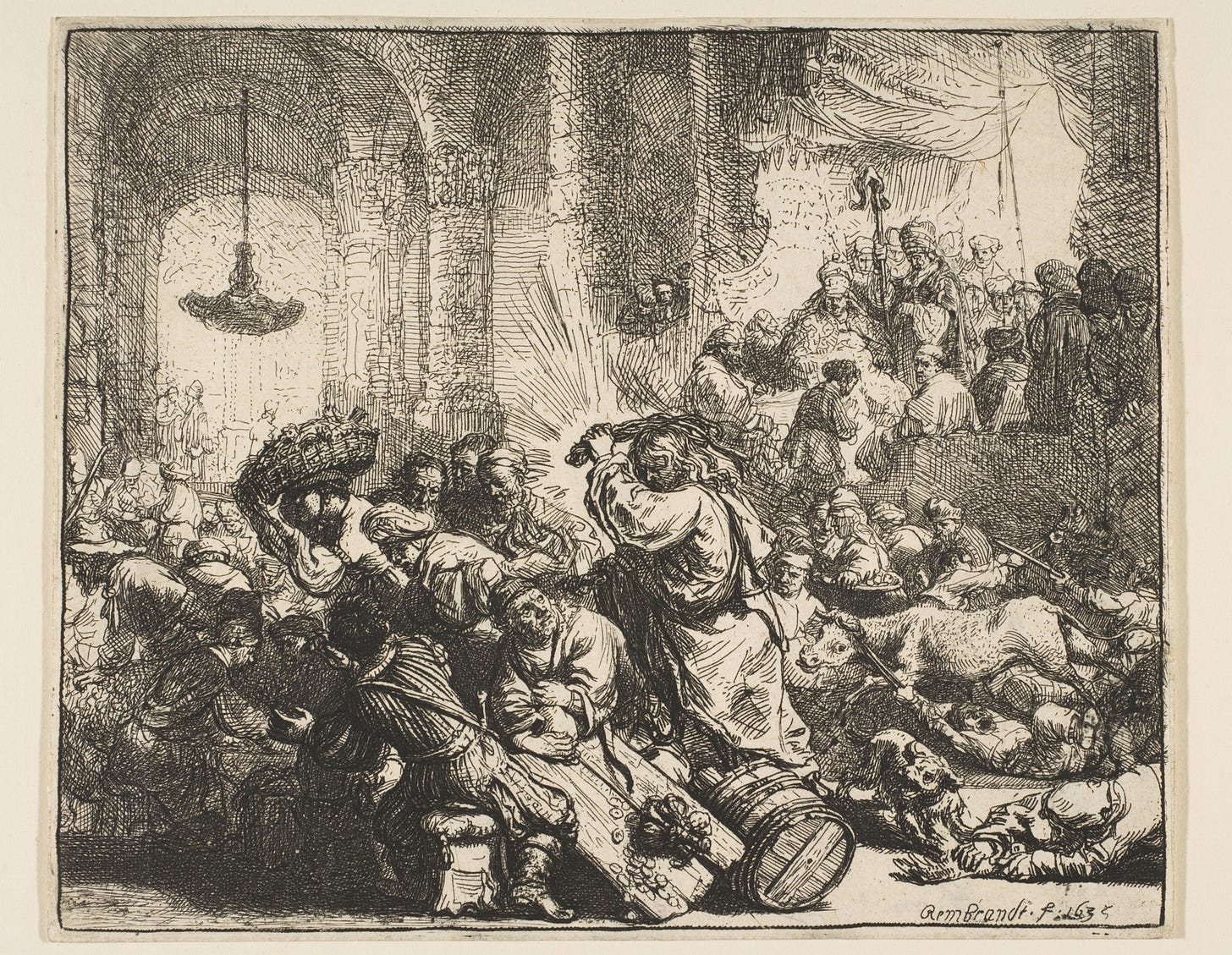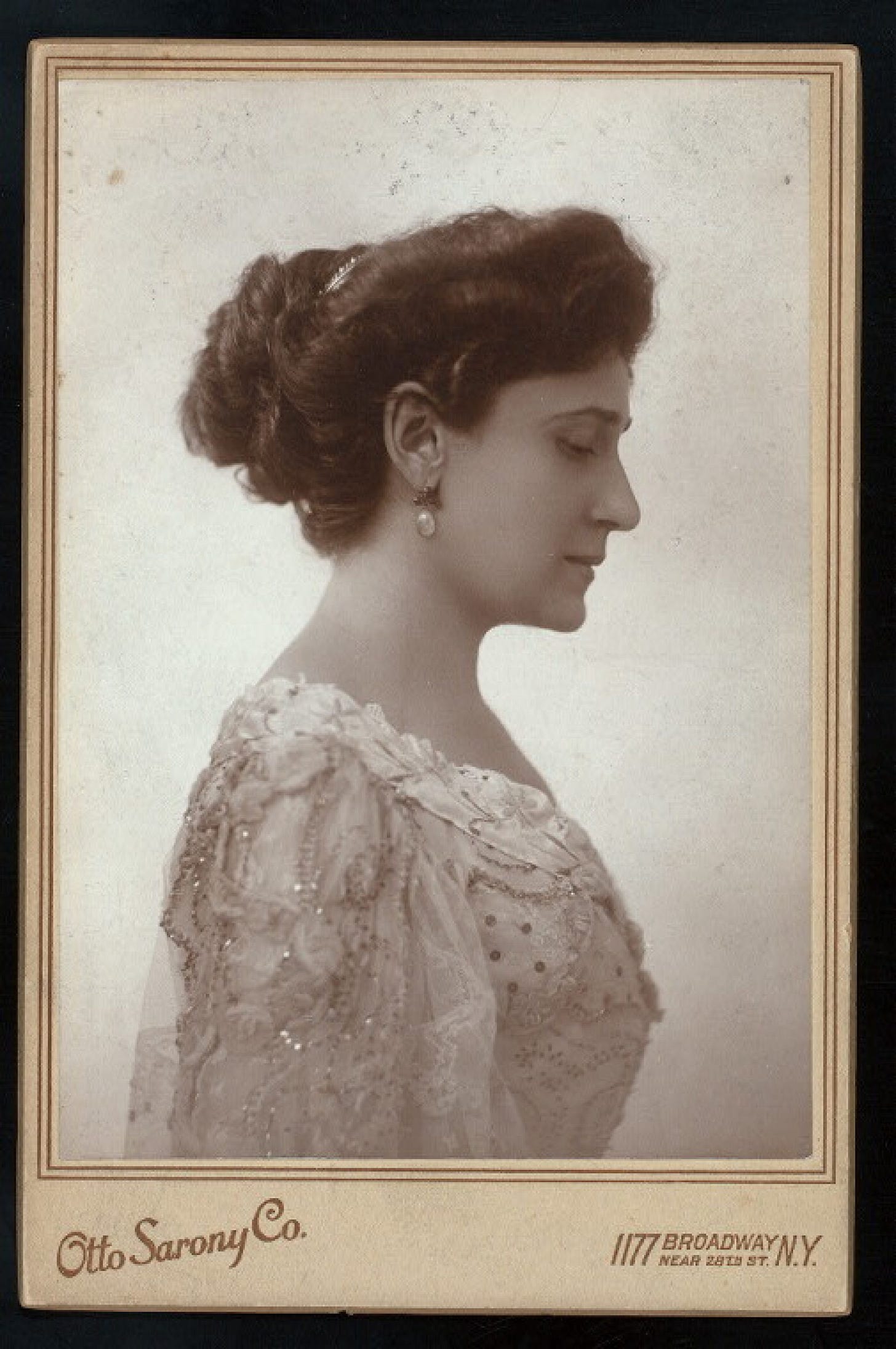The End of Biblical Lamentation?
If you've been following along, here is where you might expect me to explain how the Temple fell and the rabbis came in and banished the female lament forever.
But that is not what happened.
Instead, we find that mentions of the lament gradually diminish in the written record:
In the wider context of mourning customs in talmudic literature, there is some evidence of dirges and women keeners, but the scant mention made of them fails to reflect the continuity of Jewish traditions of the time of the Mishnah with previous periods. (Keening Women)
We do find rare regulations that modulate keening practices, especially in regards to their conduct during festivals and holidays, but to this day, singing or lamenting at a Jewish funeral is still considered technically permissible, although looked on as inappropriate by many Ashkenazic Jews. So what happened?
Lamenting In the Service of the State
One fascinating theory that opens this up begins with the Greek lament. In the Greek tradition, attempts to ban professional wailing show up as early as 6th BCE, because it stirred up the passions and led to revenge killings. Holst-Warhaft (H-W) does a brilliant job of examining this in Dangerous Voices.
Her theory (oversimplified here) is that the state needed to wrest control of the narrative over death and sacrifice away from women in order to put it towards national and military ends. This process percolates for a while and ultimately, leads to the birth of the Tragedy. Many early Greek tragedies contain dramatized versions of the lament, which H-W carefully unfolds.
The "two literary genres that were the "invention of Athens" the Epitathios logos, the encomium, delivered at the tomb, and the tragedy, are, I suggest, appropriations of the lament..." (Holst-Warhaft)
Does it Apply to the Jewish Situation?
This is a fascinating theory but parallels to the Jewish world are complicated. One, we don't see the same sort of problems rise to the point of needing prohibitions and two, lamenting is often seen as consistent with the national project. For instance, see the examples of the national lament and in the laments that are tightly wound up with military campaigns. In fact, it is only when the 2nd temple is toppled, and Judaism becomes communal and not national, that the lament seems to fade.
However, the male funeral oration does make inroads:
To the ḳinah was soon added the Funeral Oration, which steadily increased in importance as compared with the ḳinah, until the latter was omitted entirely. But although the ḳinah was thus excluded from the public funeral rites, it still survived as an individual expression of grief for the loss of friends or kinsmen. Jewish Encyclopedia
But in both societies, new power structures will have to adapt the early pagan lament to the evolving need for social meaning. In the Jewish example, several influences will converge to create a situation where the earlier lament is absorbed by the dominant powers and changed significantly.
Chaos in the Temple
That story begins with the collapse of the Second Temple. The Jewish world may not have had the same problems with revenge killing, but it did have parallels to that sort of social chaos. The last few decades of the temple were apparently wild, even internally violent, ones.1 Heck, even a hippie like Jesus was knocking over tables and throwing punches. After the destruction of the temple, a moderating impulse emerges to tamp down the wilder excesses. This is framed as a return to righteousness but it is just as likely an attempt by Jewish civic leaders to return the community to a form more acceptable to the Roman rulers, in the hopes of being allowed to rebuild the temple. It also marks the end of the sacrifice cult and there may have been a need to replace that important measure of cohesion provided by the sacrifice.2 Finally, another wave of regulations or even bans on music were announced, some which may have affected laments.3
Appropriation
But bans against music or lament, as the Greeks and Jews learned, seldom work. Much more effective was making the lament redundant.
Under the priests and imams of today, the weeping is left to family and friends while the clerics perform processions and rituals full of quiet somber intonations. Professional mourners have not so much disappeared over the last millennium they have simply donned robes and stopped crying. - Crying: A Natural History of Tears
We can see traces of this redundancy in modern day examples where Jewish keening is still practiced, in the communities of the Caucasian "Mountain Jews" and in Yemenite Jews. In both, there are essentially two separate funerals, segregated by gender. The women's one is emotionally fraught, with improvised keening and the men's one is more restrained, with textually-based readings. We’ll take a look at those communities more in the next post, but Caraveli-Chaves found something similar in Greek traditions:
In the context of the traditional segments of the Greek village I have observed, the spheres of activity of men and women are strictly separate and, in many ways, parallel to, and independent from, rather than subservient to each other. (Anna Caraveli- Chaves, Bridge Between Worlds)
Gamliel, studying laments amongst Yemenite Jews in Israel finds similar parallels:
The men were aware of the women’s wailing but did not participate in it. In this wailing culture, as in others, the lamentation was “stage directed” as if meant exclusively for women and merely overheard by men.
Appropriation in Liturgy
Lamentation in the Jewish liturgy was not new to the post-exilic Jews, but its emphasis in the Jewish service has varied throughout history. I'm going to post just a few of what seem like an infinite amount of personal testimonies of modern experiences during Kol Nidre, a prayer that has been noted for its solemn, lament-like quality, so you can contemplate how it is similar to and perhaps appropriative of, keening traditions:
I stood as though rooted to the spot and observed the tall, waxen candles that had just been lit for the souls of the deceased. I observed the people who came a little bit earlier, in order to fit in another prayer, before rising for the Kol Nidre prayer. People cried their hearts out and it became easier for them…
Squeezing himself into the corner of a local synagogue, 19th century Austrian poet Nikolaus Lenau bowed his head, joining the men dressed in flowing, snow-white robes as the cantor began the opening strains of “Kol Nidre.” It was the beginning of Yom Kippur, the Jewish Day of Atonement, an annual day of fast and prayer.
“I struggled with an inexplicable emotion,” Lenau later recounted in an 1843 diary. “I sobbed convulsively while hot tears poured from my eyes. Then I ran out into the night; my spirit torn and purified. I believe in that never-to-be-forgotten hour no single stain remained upon my soul!” Times of Israel
From the lectern, a weeping; a rich, refined voice burst into song. Notes rose and fell. Here the voice bell-like, there moaning like a small, sick child. The voice went quietly and sweetly from low to high—first pleading — then reproaching. Here the voice trembled and there it beat with steely determination; here it was weak and there it commanded — and these two words rang out: Kol Nidre.
The audience heaved a sigh. And the choir answered with a resounding swell as wide as the sea and as strong as stone. The whole hall was filled with song, and it seemed that one had suddenly overcome a difficult passage on the road and freed oneself from a heavy burden. Bertha Kalich in Bucharest
Kinah
The examples above are, of course, modern examples, used because we lack reactions from the earlier centuries. But as we saw with Kol Nidre, in addition to male religious figures getting in on the funeral business, Judaism absorbed lamentation directly into its (male-constructed) liturgy. Although lamentation has been with Judaism for a long time, it really becomes a dominant feeling-state with regards to the fall of the Second Temple, complete with its remaining "wailing" wall.
It even forms its own religious literary genre, the kinah or kinnot. These are elegies, dirges or lamentations in reaction to various national tragedies. They are literary, and valued as such, but also recited in religious contexts.
Technically, the term “kinah” is older than the destruction of the 2nd temple (goes back to the early Bible), but it emerges as a self-conscious literary genre in the post-talmudic times and is still active today. Like the old timey lament, kinah are unique literary creations, but, in the premodern era, were composed entirely by men.4 They are also, like the laments of old, sung in antiphonal fashion. Here’s a good example .
The Big Difference: Consolation
Kinah offer us a glimpse into the evolving approaches to lamenting. At play is the idea of consolation.
If you remember back to H-W’s work on the Greek Lament- the old female lament was an existential complaint against Death. The narrative arc does not offer salvation or consolation. It just goes from despair straight to more despair. Hence, there is occasionally a need to “fix” loose ends, i.e. revenge killings. In contrast..
The (male) funeral oration, for those who die in battle, makes a virtue of death, provided it is death in service of the state. This is in direct opposition to the lament of their female relative... [who] mourn their personal loss... and look at death as the enemy. H-W5
Not all Jewish lament offers salvation- kinah evolve and morph through history (in fascinating ways) and some are unrelentingly bleak, appropriate to the horrors they describe. But the overall trend in religiously themed kinah is that, in the end, there is consolation or its possibility. For example:
The kinnah begins “How long must Zion cry and Jerusalem mourn? Pity Zion, rebuild the walls of Jerusalem.” The elegy ends with words of consolation taken from the book of Isaiah (51:3): “For the Lord shall comfort Zion: He will comfort all her waste places; and He will make her wilderness like Eden, and her desert like the garden of the Lord. Joy and gladness shall be found in it, thanksgiving, and the voice of melody.” Kinnot
Even though the Greeks and Jews ended up with very different social structures, in some ways, the Jewish appropriations of lament did what the Greek tragedy did; it moved lament out of the personal confrontation6 with Death and placed it into the service of a national narrative.
This question of consolation, however, is not quite settled and everyone from Nietzsche to Freud to Benjamin and Scholem and many others will weigh in. I’ll be honest, I’m not sure I can make good sense of it yet- This is a good overview. For purposes of playing klezmer, I think the important thing to understand is simply that there are two versions of the lament, one that consoles and one that absolutely does not. I will give examples and unpack this a bit in the next post.
Conclusion and Summary
Keening was never outlawed in Jewish life and never quite disappeared in the Jewish tradition, even until today, although it has effectively died out in the Ashkenazic tradition and is hanging on by a thread elsewhere. Instead it became redundant, and two parallel roads emerged, one female-dominated, oral, pre-Judaic and unconsoling and the other male-dominated, text-based, normatively religious and consoling.
The males “won” that battle but the victory is, of course, never quite complete. We’ll find aspects of the old time lament crop up again and again. Some examples will be shared in the next post.
But even the wailing women themselves would remain through this period. After a brief detour to examine the full richness of the unconsoling lament, we’ll head to medieval Iberia and North Africa, and examine how the lament morphs into music.
From Feasts to Mourning: Violence in Early Jewish Festivals. https://www.jstor.org/stable/1206114
Insert here Rene Girard, and an endless wormhole of the interaction between sacrifice, substitution and social meaning.
See Henry David Farmer, Listening to Music with Maimonides on long history of Jewish regulations of music.
Proving negatives is always tough- would love to be proven wrong here. This is all the more strange because we know, as we’ll see in upcoming posts that female mourners were orally composing qinas or qinot, but they didn’t get included in the written religious liturgy.
“The blues in an impulse to keep the painful details and episodes of a brutal experience alive in one’s aching consciousness, to finger its jagged grain, and to transcend it, not by the consolation of philosophy but by squeezing from it a near-tragic, near-comic lyricism. As a form, the blues is an autobiographical chronicle of personal catastrophe expressed lyrically.” - Ralph Ellison . Comparisons of the lament’s approach to consolation with other forms, like rebetika and blues will have to wait a bit.
This question of “consolation” opens the discussion up to a huge continent of thought relating religion to consolation (Nietzsche, Marx, Freud). Eli Schonfeld’s Ein Menachem: On Lament and Consolation in The Lament in Jewish Thought does a great job of connecting these dots.







